MAY 2022. Blues Vol 38 No. 5
- Text
- Wwwbluespdmagcom
- Hiring
- Additional
- Judges
- Vehicles
- Agencies
- Corrections
- Stoppers
- Tango
- Enforcement
- Blues
THE OPEN ROAD by Michael
THE OPEN ROAD by Michael Barron ELECTRIC SHOPS Debunking the top ten myths in electric law enforcement vehicles. By Chief (retired) Michael Benson and Chief Todd Bertram Electric vehicle (EV) myths are pervasive in our media culture. Yet it seems like EV stories are all negative: they have short ranges, are too small, catch fire and have no power. Are they really as bad as they say? Or do the police departments already adding them to their fleets know something we don’t? There are a lot of myths out there, so let’s learn from a couple of chiefs who know the truth. Electric vehicle myths are intended to keep you from considering adding electric vehicles to your fleet. Don’t let them dissuade you. MYTH 1: ELECTRIC VEHICLES DON’T HAVE ENOUGH RANGE Most municipal police cars drive less than 100 miles per shift. The Tesla Model Y has a 330-mile range, the Ford Mustang Mach-E GT has a 270-mile range, and the Tesla Model 3 AWD goes 358 miles on a full charge. All three will easily cover a full shift. EVs are almost perfectly designed for police work as they use very little power while idling with the HVAC running, or driving at neighborhood patrol speeds. When you need to drive quickly, they accelerate like a sports car. While today’s EVs may not be ready for highway patrol or covering large areas, vehicle ranges of 400-500 miles are coming soon. It was only a few years ago when a long-distance EV only had a 200-mile range. MYTH 2: ELECTRIC VEHICLES TAKE TOO LONG TO CHARGE This depends on what level of charging you are using, and how much energy [battery state of charge (SOC)] you want to start your shift with. If you plug into a typical 120V wall outlet it would take a full day to charge. Most agencies install “Level 2” charging, which uses a 240V circuit similar in size to the electric dryer or air conditioner in your house. Level 2 charging refills your battery to 80% SOC in a few hours. If your vehicles stay at the station between shifts this works well. If you share your cars, or you have another need to charge your vehicles in 15 minutes or less, you need a Direct Current (DC) fast charger. This type of charging can be expensive and energy-intensive, but is essential for a mission-critical EV fleet. DC fast charging speeds range significantly based on their power levels, which are five to 35 times faster than Level 2 charging. Based on the battery packs in Teslas and the Ford Mach-E, you will need an 80-100kW DC fast charger to refill your car to 80% SOC between shifts. With the right-sized charging infrastructure, EVs can be refilled and ready for their next shift as quickly as the time it takes to drive to a gas station and pump your gas. And your charging will take place at the station between shifts actually reducing the time needed to fill your “tank” before your shift. MYTH 3: ELECTRIC VEHICLES ARE TOO EXPENSIVE This is true if you only look at the up-front purchase price, but if you look at the total cost of ownership, EVs cost far less than gas vehicles. The Bargersville (Indiana) Police Department has been saving ,000 annually per EV, resulting in a break-even point in 18 months. From then on, the agency keeps those savings in its budget, which helps to keep the department staffed. As we move forward, EVs will keep getting cheaper and better. The battery pack is the most expensive part of the car, and battery costs continue to drop as more EVs are manufactured. The 2022 Ford F-150 Lightning already has cost parity with Ford’s internal combustion engine (ICE) versions this year. Other EVs will match their ICE counterparts in the next two years, especially after the current automotive supply-demand issues are resolved. MYTH 4: ELECTRIC VEHICLES ARE NOT PURSUIT-READY Actually, EVs are inherently quick due to having 100% of their power available from a standstill. Their acceleration will help your officer to quickly catch up, and possibly avoid a long pursuit. Just like an ICE car, you need to start your shift with enough fuel to be ready to respond. This emphasizes the importance of having an 80% SOC when you get to work, and possibly plugging in your car when you are parked at the station during your shift. This will ensure you are ready and able to participate in a pursuit. MYTH 5: ELECTRIC VEHICLES ARE SO NEW YOU CAN’T GET PARTS TO REPAIR THEM We all heard horror stories from the early days of EV production, especially from Tesla several years ago. Since then, the situation has changed; volume production for EVs has made parts access much easier, and more EV factories are coming online every year. The need for maintenance of an EV is much lower than a gas car. There are no oil changes, no transmission to replace and no exhaust to rust away. Most agencies only need to replace tires, which you do for all vehicles, or replace some parts under warranty. 90 The BLUES POLICE MAGAZINE The BLUES POLICE MAGAZINE 91
- Page 1 and 2:
The BLUES POLICE MAGAZINE 1
- Page 4:
FOUNDED IN 1984 MAY 2022 FEATURES 3
- Page 8:
FROM THE PUBLISHER’S DESK “How
- Page 12:
READERS SPEAK OUT guest commentary
- Page 16:
AROUND THE COUNTRY DPS TO 200 TROOP
- Page 20:
AROUND THE COUNTRY FLORIDA SHERIFF
- Page 24:
AROUND THE COUNTRY SC OFFICER FATAL
- Page 28:
AROUND THE COUNTRY DWI NEARLY KILLS
- Page 32:
AROUND THE COUNTRY Expand your radi
- Page 36:
AROUND THE COUNTRY C&G WHOLESALE We
- Page 40: Customized Security Solutions Gover
- Page 44: Harris County Paid 5,000 on the
- Page 48: ALEXANDRA “ALEX” DEL MORAL MEAL
- Page 52: ALEXANDRA “ALEX” DEL MORAL MEAL
- Page 56: REMEMBERING THOSE WE’VE LOST Lost
- Page 60: NATIONAL EVENTS WASHINGTON DC Natio
- Page 64: NATIONAL EVENTS WEDNESDAY, MAY 11,
- Page 68: NATIONAL EVENTS WASHINGTON DC FRIDA
- Page 72: NATIONAL EVENTS SATURDAY, MAY 14, 2
- Page 76: NATIONAL EVENTS SUNDAY, MAY 15, 202
- Page 80: TEXAS EVENTS AUSTIN 80 The BLUES PO
- Page 84: TEXAS EVENTS AUSTIN 84 The BLUES PO
- Page 88: HAPPY ENDING Exactly thirty days af
- Page 94: A BADGE OF HONOR heal ing our heroe
- Page 98: DARYL LOTT daryl’s deliberations
- Page 102: NOT SO BRIGHT AWARD lig ht bul b aw
- Page 106: DR. TINA JAECKLE blue mental health
- Page 110: ADS BACK IN THE DAY 110 The BLUES P
- Page 114: THERE ARE NO WORDS parting shots...
- Page 118: Plano Police Department Get Info Po
- Page 122: 122 The BLUES POLICE MAGAZINE The B
- Page 126: Cuero Police Department DEER PARK P
- Page 130: WE ARE HIRING! BENEFITS • Free ba
- Page 134: Now Hiring OFFICERS TCOLE Certified
- Page 138: 138 The BLUES POLICE MAGAZINE The B
- Page 142:
142 The BLUES POLICE MAGAZINE The B
- Page 146:
NOTABLE QUOTES Santa Rosa County Fl
Inappropriate
Loading...
Mail this publication
Loading...
Embed
Loading...








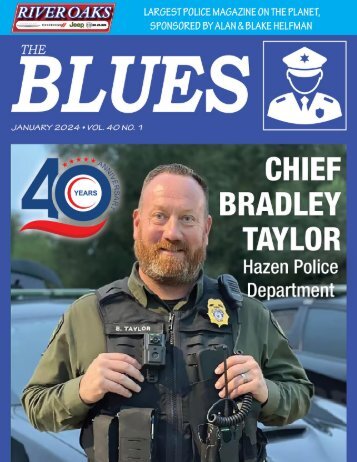




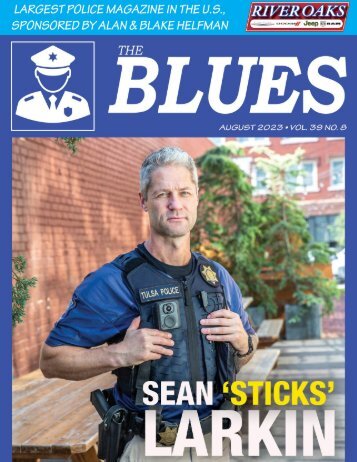
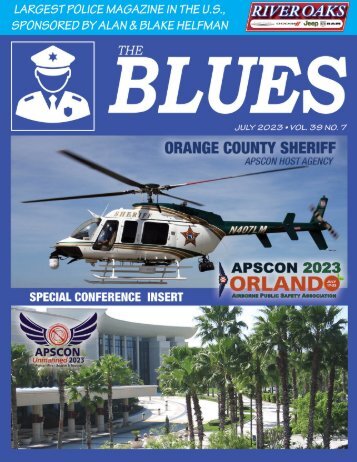









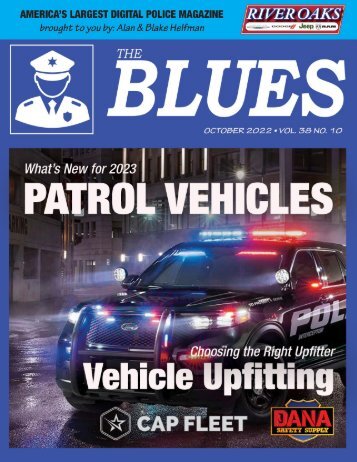
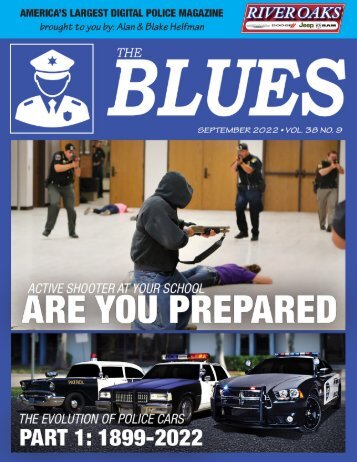







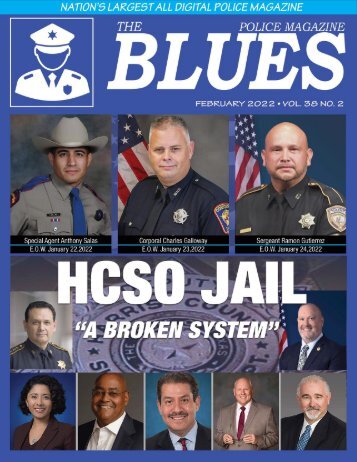













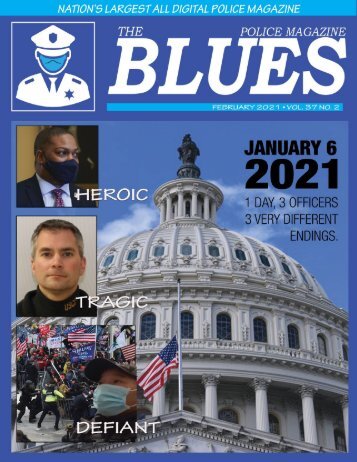







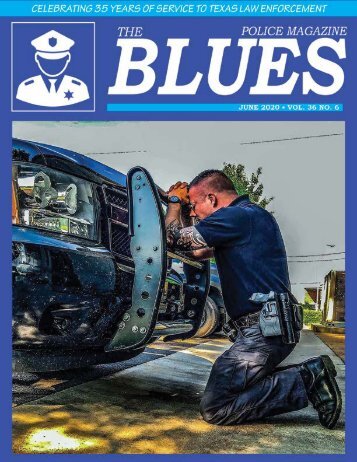





Follow Us
Facebook